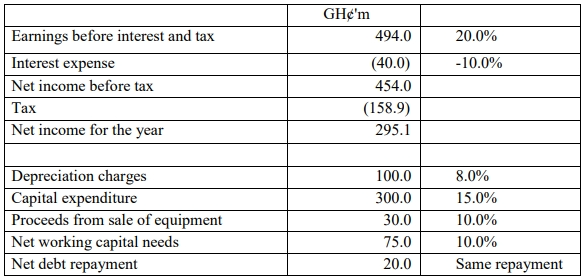- 14 Marks
AFM – Nov 2016 – L3 – Q2a – Dividend policy in multinationals and transfer pricing
Advise on factors affecting dividend policy and calculate GGML’s dividend capacity and payout ratio for the next three years.
Question
You are the newly employed Finance Director of Gala Gold Mining Ltd (GGML), a fast
growing Ghanaian mining company. The ordinary shares of GGML are listed on the Ghana
Stock Exchange. The company issued two million fresh shares in an Initial Public Offer (IPO)
to meet the minimum public shareholding requirement of the Exchange. In the prospectus
accompanying the IPO, the company proposed a stable earnings pay-out ratio of 20%.
It has been one year since the listing of GGML’s ordinary shares. At the first post-listing annual
general meeting, which was held last week, the directors recommended that the company
retains the entire profit earned in its first year as a public company to help finance profitable
mining opportunities in the Western part of Ghana. This 100% earnings retention proposal was
rejected by the shareholders, and the directors have promised to reconsider the issue and
recommend some dividends.
The directors would be meeting in the coming month to discuss the matter with the hope of
developing a sustainable dividend policy for the next three years. You are expected to make a
presentation on the company’s dividend capacity at the meeting.
You have gathered relevant extracts from the financial results of the past financial year (i.e.
financial year ending June 2015) and expected annual changes in the values over the next three
years (i.e. financial years ending June 2016, 2017 and 2018) presented in the Table below :

The company’s tax rate is expected to remain at 35%.
Required:
i) Advise the directors on THREE factors they should consider in developing an appropriate
dividend policy for GGML. (6 marks)
ii) Calculate the maximum dividends GGML can pay for the past financial year, and estimate
its dividend capacity for the next three years. Recommend an appropriate dividend payout ratio for the coming three financial years.
Find Related Questions by Tags, levels, etc.
